We developed the Opioid Prescribing Recommendations to empower you to provide great tailored care to your patients. A preventative, evidence-based approach, these recommendations comprise best practices in acute care settings to help reduce your patient’s risk of developing persistent opioid use – without compromising well-being during recovery.
Since the launch of the recommendations in Michigan, prescription size has been reduced by 76% with no change in patient-reported pain or satisfaction scores.
When an opioid is needed after surgery, use the OPEN prescribing recommendations as the foundation for a shared decision-making conversation with the patient to determine the best prescription size.
It’s important to note that these are recommendations, not rigid rules that must be adhered to. Starting from a standardized approach and then allowing for individualization helps promote both equity and patient-centeredness.
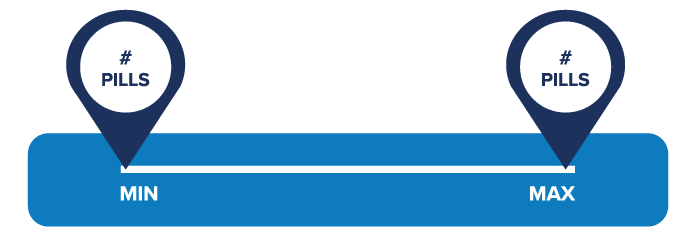
OPEN’s Opioid Prescribing Recommendations are designed to frame meaningful conversations between patients and providers, so every pain management plan is tailored to the individual. These recommendations are rooted in research, patient-reported outcomes, and expert consensus. They are intended for patients who haven’t used opioids before surgery. Explore OPEN’s evidence-based recommendations for safer prescribing after adult surgery below.
OPEN’s Opioid Prescribing Recommendations are designed to frame meaningful conversations between patients and providers, so every pain management plan is tailored to the individual. These recommendations are rooted in research, patient-reported outcomes, and expert consensus. They are intended for patients who haven’t used opioids before surgery. Explore OPEN’s evidence-based recommendations for safer prescribing after pediatric surgery below.
Pain Score was rated on a scale of 1 (no pain) to 5 (worst possible pain). Satisfaction with Pain Management was rated on a scale of 1 (not at all satisfied) to 5 (very satisfied).
References:
Cite this work:
OPEN: Overdose Prevention Engagement Network (2024). OPEN Prescribing Recommendations- Adult. Retrieved from https://doi.org/10.56137/OPEN.000054
OPEN: Overdose Prevention Engagement Network (2024). OPEN Prescribing Recommendations – Pediatric. Retrieved from https://doi.org/10.56137/OPEN.000055
OPEN: Overdose Prevention Engagement Network (2024). Pain and Opioid Data Collection Recommendations. Retrieved from https://doi.org/10.56137/OPEN.000076
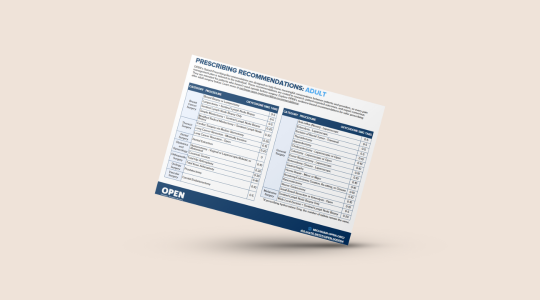
Use OPEN’s evidence-based prescribing recommendations for tailored pain management after surgery in adult patients.
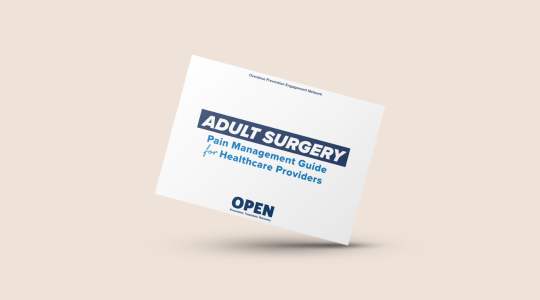
As a healthcare provider, learn evidence-based approaches to help manage your patient’s pain after surgery.
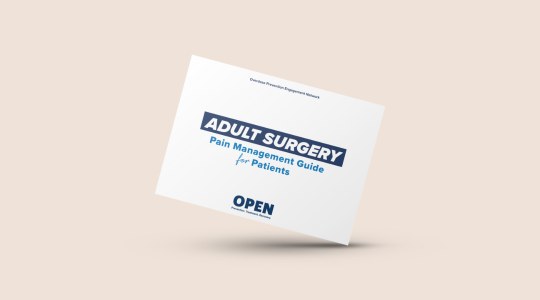
Learn how to prepare for surgery and to help manage pain after surgery.
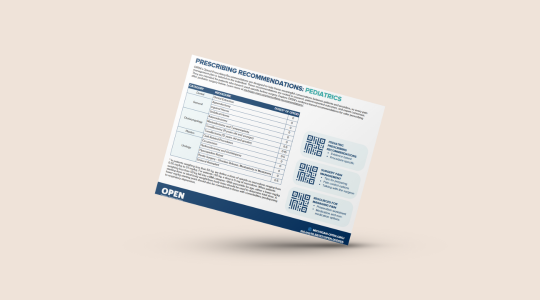
Use OPEN’s Pediatric evidence-based acute care opioid prescribing recommendations after surgery.

Explore OPEN’s process to create and evaluate opioid prescribing recommendations.
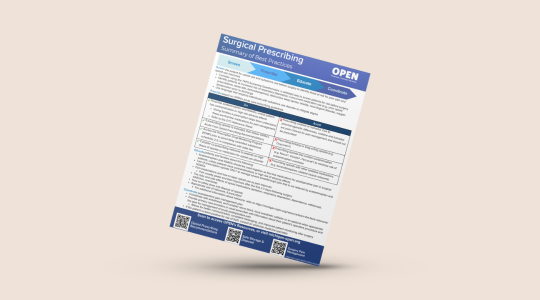
Stay up to date with OPEN’s summary of best practices for prescribing after surgery.
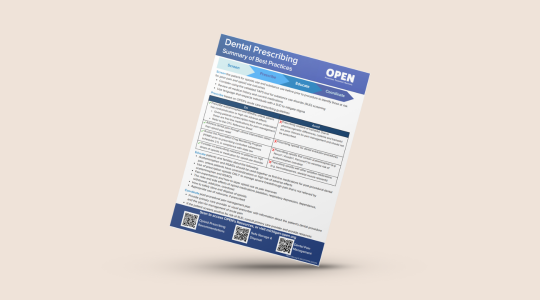
Stay up to date with OPEN’s summary of best practices for prescribing after dental surgery.
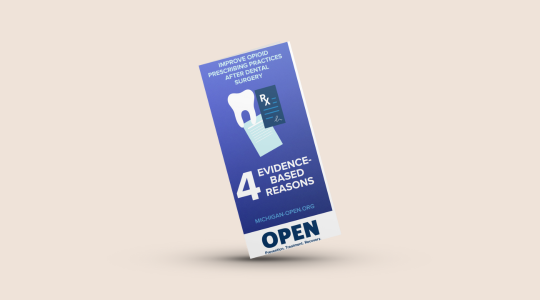
Explore 4 evidence-based reasons to improve opioid prescribing practices after dental surgery.
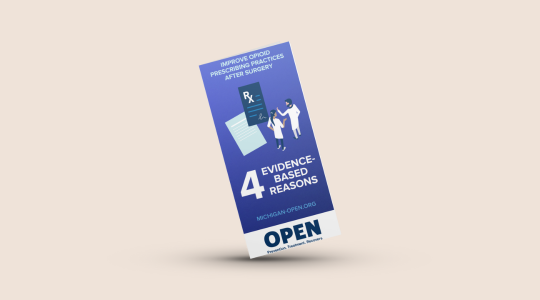
Explore 4 evidence-based reasons to improve opioid prescribing practices after surgery.

Explore the five Levels of evidence to use while making educated determinations about prescribing and care.

Use this crosswalk to understand the link between individual surgical procedures and all Current Procedural Terminology codes for major surgery in the 2014-2022 AHRQ algorithm.